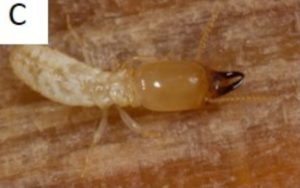by Maurice Hulle
The Subantarctic islands, among the most isolated in the world, harbour a small number of native terrestrial invertebrates which, in the course of their evolution, have developed specific biological adaptations, the most notable of which is the loss of The flight function in insects. Since their recent discovery and, above all, since the installation of permanent bases, these fragile ecosystems have undergone significant biological disturbances.
The Subantarctic islands are arranged around the Antarctic continent between the 46 ° and the 54 ° parallel of the southern hemisphere, on either side of the polar front where the cold waters of the Antarctic current meet the warmer subantarctic waters.

They are grouped into three provinces (Indian, Atlantic and Pacific Oceans) each with a different biogeographic history. These French islands of Kerguelen and Crozet belong to the south Indian Ocean province which comprises four groups of islands: Kerguelen, the Crozet Islands, the group of the Australian Islands of Heard and Mac Donald located further south and that of the islands of Prince Edward ( Prince Edward and Marion) located to the west of Crozet and which belongs to South Africa.
This geographical situation gives them a climate called cold oceanic. The mean temperature of Crozet and Kerguelen is 5 °c with low seasonal variations (averaging 2 to 8 °c). The islands are located on the passage of oceanic depressions that revolve almost permanently around the Antarctic continent. The winds are therefore strong (35 km/h on average) and frequently exceed the 100 or even the 150 km/h. Precipitation is very high at Crozet (about 2500 mm/yr). In Kerguelen, the precipitation ranged from 2000 mm on the West Coast exposed to the wind to about 750 mm on the east coast. Temperatures decreasing by almost one degree every 100 m in altitude, so that the thermal developmental thresholds of most insects are rapidly reached and life is concentrated on a littoral band less than 200 m above sea level.
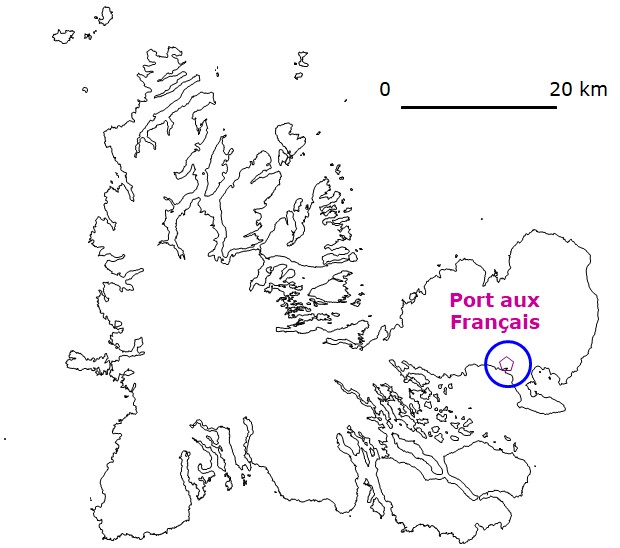
These islands are of volcanic origin. The first geological episodes that led to their emergence from the ocean Plateau date from about 40 million years for Kerguelen and 8.5 million years for Crozet. It is probable that the last major glaciations of the late Pleistocene have virtually covered the islands, leaving only a few refuges for wildlife in particular in the Crozet Islands.
Kerguelen is composed of a main island or large land that covers 6675 km² and a large number of islands of varying sizes and covering a total of 540 km². The base of Port-aux-Français is located southeast of the Grande Terre. The Crozet Islands are composed of two groups of about 100 km away. The West Group comprises 3 uninhabited and rarely visited islands. The group is comprised of two islands including the island of Possession with a surface area of 140 km2 and on which was installed the base Alfred-Faure. The data evoked on the fauna of Crozet concern only this island of Possession.

Native invertebrate Fauna
One can designate as native fauna the one that the first visitors were able to observe. This fauna is thus derived from the process of colonization of the islands by natural pathways such as transport on birds or air currents. Apart from the abundant mammalian and seabird species, and given the isolation of the islands and low temperatures, only a few terrestrial species have succeeded in surviving or colonizing glaciations since then. This results in species-poor fauna, many of which are absent: only two species of terrestrial birds, no mammals, no reptiles or amphibians.
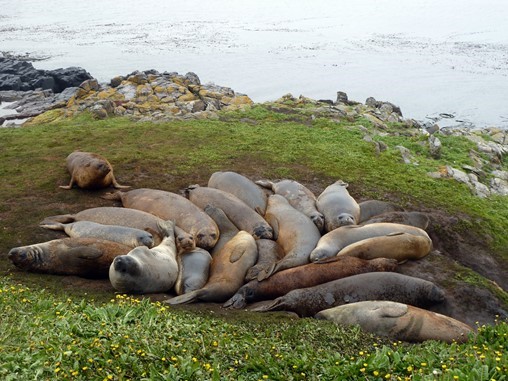
Terrestrial fauna, composed mainly of invertebrates, has about 200 species. Collembola and mites are rich in several dozen species. The Macrofauna comprises only 68 species: 3 earthworms, 1 mollusc, 9 spiders and 54 insects. Among these beetles and Diptera are the two most important orders with 32 and 15 native species respectively.
Native species include strict endemic species from either island, species specific to the south Indian Ocean Province, and are therefore found on at least two of the four groups of islands in this province and subantarctic species Which is also found in the province of the South Atlantic Ocean and the Province of New Zealand.
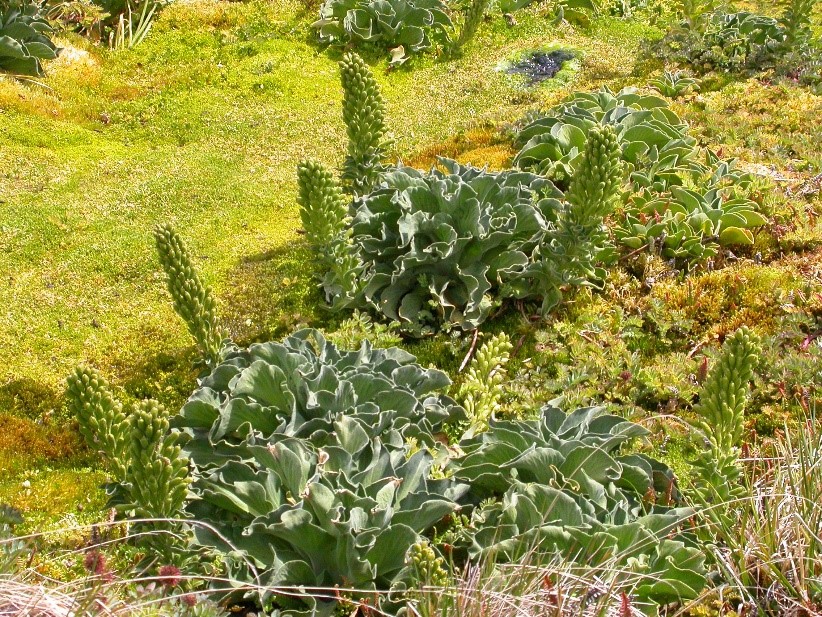
The rate of endemism is particularly high in Crozet, where 68% of indigenous species are strict endemics (30% to Kerguelen). The order of beetles includes, for example, 18 endemic species of the 22 indigenous species of Crozet, that of Diptera 8 out of 14. 5 of the 8 species of spiders are also strict endemics. Crozet has thus experienced active evolutionary radiation that has led to more endemic species than to Kerguelen despite a much smaller area.
The small number of species in presence has generated simplified food webs where the consumption of decaying organic matter plays an important role. This organic matter comes from the microflora, the superior plants, the sea-leashes and the extremely important colonies of marine animals, mammals and birds. Food from the sea is abundant and possibly seasonal and many of the decomposing insects depend on it. These strong interactions between the marine environment and the terrestrial environment are one of the characteristics of the ecological functioning of these islands. The number of species of decomposing invertebrates is therefore important compared to that of phytophagous or predatory species. This bias in favor of the decay function is another ecological feature of these environments.
Major native insect species
As we have seen, beetles are the richest order of the Subantarctic islands with 32 species or half of the native insect species. In their midst, Curculionidae, or weevils, show great diversity with 24 species, 18 of which are strict endemics and 6 from the South Indian Ocean province. They are a characteristic monophyletic group of this province. It is in Crozet that their diversity is the most remarkable, suggesting the important role that this archipelago has had to play in diversifying this group within the province.
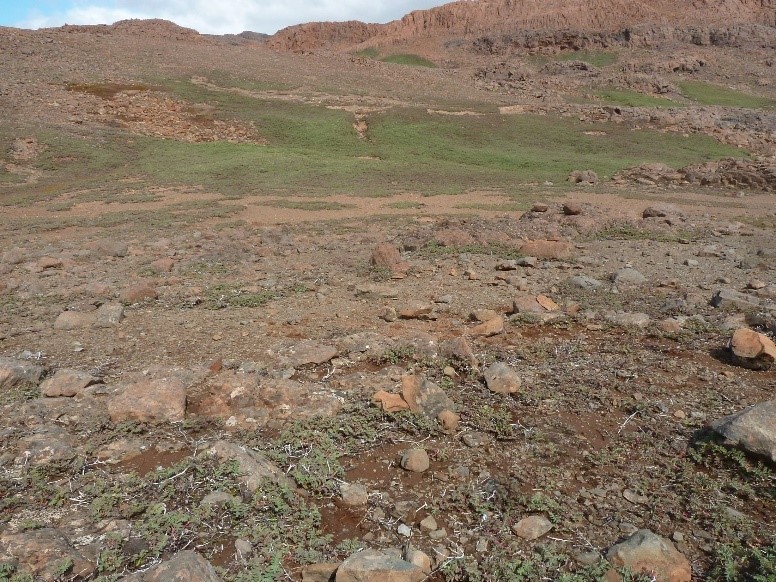
Weevils have colonized a large number of habitats from the littoral to the Fell-field elevation (steep environment, consisting of scree, Alpine zone or tundra undergoing freeze and thaw cycles where specific vegetation develops). Most of them are polyphagous consumers of microflora (algae, bacteria), lichens and bryophytes. Some like Ectemnorhinus feed preferentially on vascular plants such as Azorella Selago, Pringlea antiscorbutica, Kerguelen cabbage, or Acaena magellanica, a very abundant rosacea in these territories. Some species such as Palirhoeus eatoni are strictly littoral, living in the intertidal zone and feeding solely on entéromorphes algae (green algae of the Ulvaceae family).
Predatory beetles are mainly represented by three species of Trechidae, Amblystogenium pacificum, A. Minimum, and Temnostega Antarctica, all endemic to the Crozet archipelago.
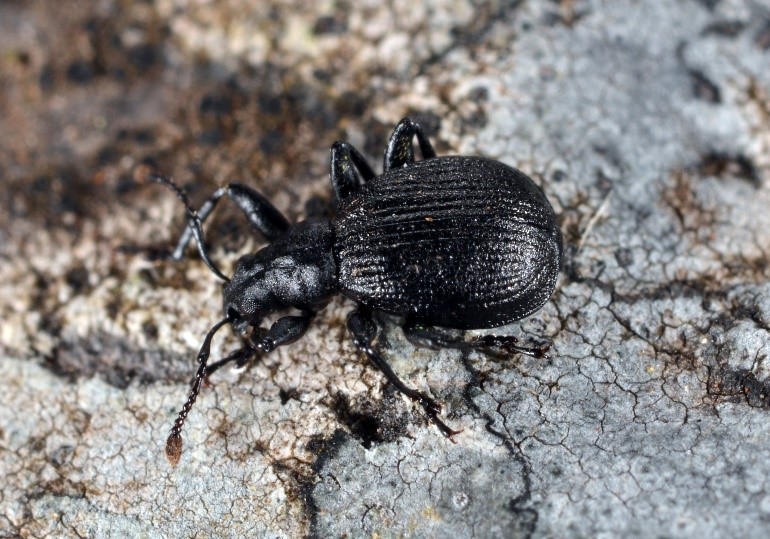
Two other Beetle families are present: The Hydraenidae family with two species one in Crozet and the other in Kerguelen, and the Staphylinidae with three species.
Aboriginal Diptera are represented by 15 species in six families. They are second order in number of species. It is within this order and that of Lepidoptera that the loss of flight function, a common biological adaptation in subantarctic environments, is the most spectacular. There are flies without wings that the first visitors have taken for ants. 9 of the 15 indigenous species of Diptera lost the flight function. They only develop smaller, non-functional wings or even become wingless. But the evolutionary success of insects is linked to this function. The flight requires a high energy expenditure often incompatible with low temperatures throughout the year. The reduction may appear as a compromise between the development of the wing and other biological functions such as reproduction, survival and growth.
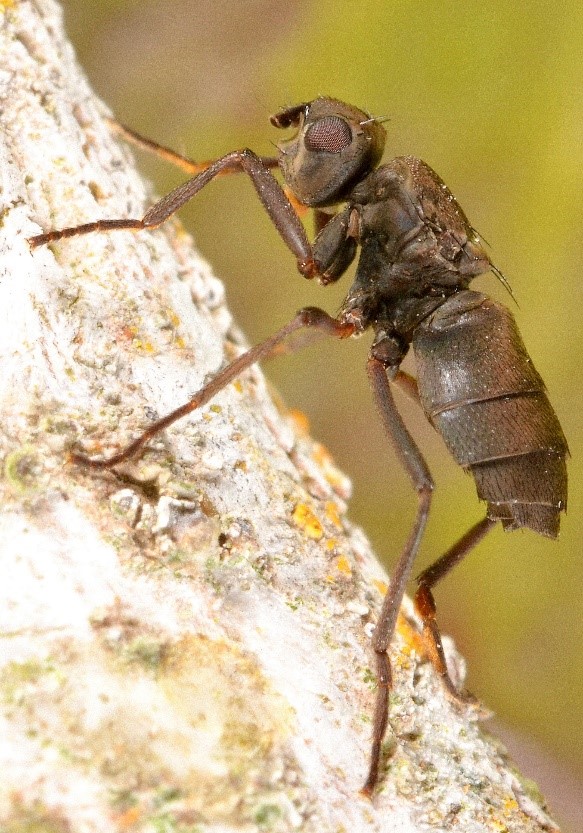
Most of the Diptera of the Kerguelen Islands are decomposers of organic matter from the sea. But this resource is seasonal, mostly summer. The possibility of reallocating energy resources for flight to the creation of additional lipid reserves would allow species to be resistant to winter cold and its lack of food resources. This is probably the case with the wingless fly, which will be suitable for a winter fast in adults. This adaptation is observed in different taxonomic families such as Sphaeroceridae, Canacidae, Micropezidae, Helcomyzidae, Ephydridae, and Chironomidae. Locally abundant food resources or low predation pressure that make flight non-essential are all assumptions that would explain this evolutionary convergence.
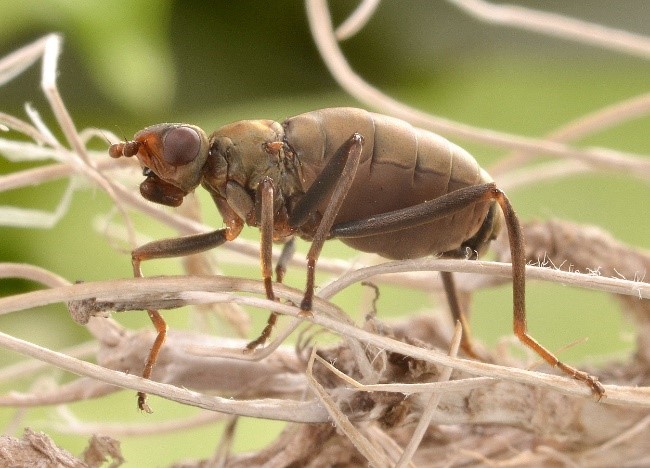
Within the Brachycères, the Sphaeroceridae family is represented not three all-wingless indigenous species, including crozetensis, and Canacidae by two species, one shortwing and the other winged, belonging to the genus Apetaenus. The other families are represented by only one species each. Among these the Micropezide Calycopteryx moseleyi lives mainly in the cabbage of Kerguelen, Pringlea Antiscorbutica. It develops dense populations within the leaves. This species is endemic to Kerguelen and heard.
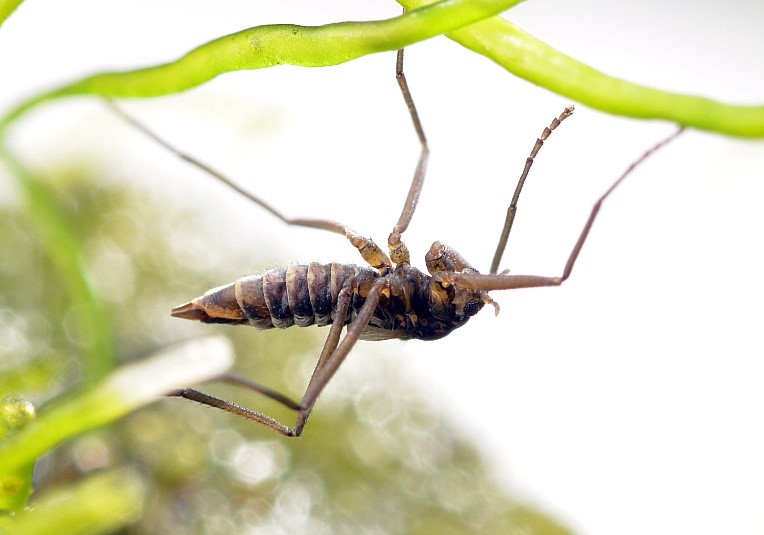
Native Nématocères include only three families, Chironomidae with four species, Simulidae with two species, and Keroplatidae with a single species. Among these two have reduced wings, Belgica albipes and Telmatogeton Amphibius. The latter species, present throughout the province of the south Indian Ocean, is a littoral species, gracile feeding on marine algae such as entéromorphes.
Lepidoptera are represented by three species, all of which have an important wing reduction. Two species belong to the Tineidae family. These are Pringleophaga crozetensis endemic to Crozet and P. Kerguelensis present in both islands. The latter is the largest of the indigenous insects in the southern islands, the adult reaching 16 mm long and the larva 50 mm. Contrary to what their name might suggest, these species are not endemic to Kerguelen cabbage, Pringlea antiscorbutica. They are found in different habitat types from the coast to the fell-field where the phytophagous or saprophagous caterpillars hide under the stones. The third species, Embryonopsis Halticella, belongs to the family Hyponomeutidae. It is very related to the native grass Poa cookii that grows near the littoral fringe.
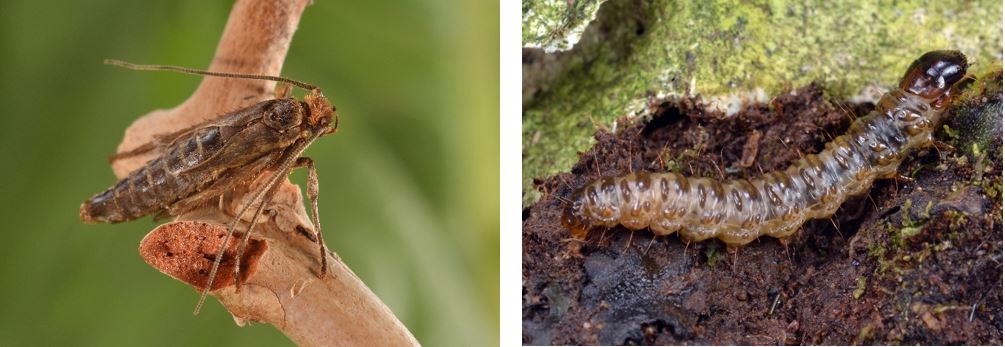
The last two orders addressed here are represented by only one species. The order of the Hemiptera includes only a bug endemic to the Crozet archipelago, Phthirocoris antarcticus (Henicocephalidae). This species can frequent is soil and probably feeds on collembola or insect larvae. The order of the Hymenoptera also includes only one species, a Eucoilidae wasp, Kleidotoma Icarus present throughout the province of the south Indian Ocean. It is a parasitoid species of Diptera. Canacidae flies of the genus Apetaneus, with which it shares the same littoral habitat, appear to be its main hosts, but can also parasitize other Diptera families such as Ephydridae or Sphaeroceridae.
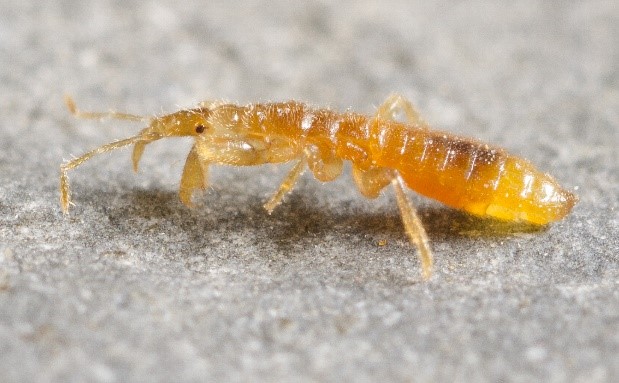
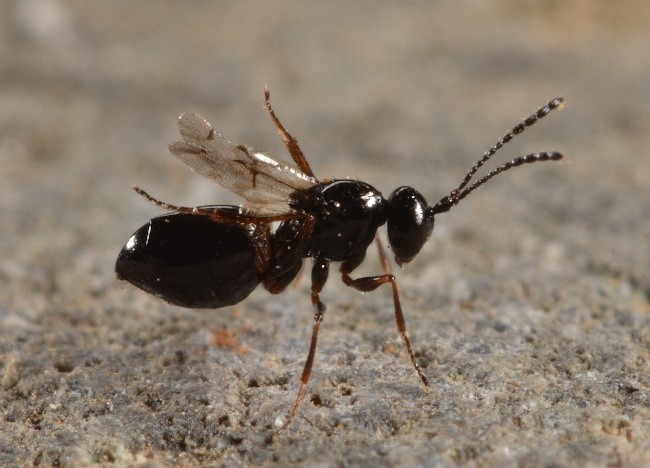
Insects and men: biological invasions
The fauna and flora of the islands of Crozet and Kerguelen have evolved in a situation of anthropological isolation until the end of the 18th century. They were then subjected only to natural processes of extinction and colonization. At that time, the scientific curiosity supported by the public will to go in search of new land, promoted the organization of many maritime expeditions and most of the Subantarctic islands were discovered during these voyages Circumterrestres. This was the case of the Crozet islands of which Julien-Marie Crozet (1728-1780), second of Marc-Joseph Marion Dufresne took possession in 1772 and of the Kerguelen Islands discovered during the expedition of Yves Joseph de Kerguelen de Trémarec (1734-1797). During the 19th century, these islands were the object of intense exploitation of seals and then whales hunted for their fat, the number of vessels present capable of reaching several dozen at the same time.
It was also the time of the first introductions of foreign species, some of which were volunteers such as rabbit and Dandelion. In the course of the time these first introductions had extremely important impacts by disturbing the landscape of the islands. The rabbit, for example, exerted a strong predation favouring the sometimes monospecific development of a low-consumed magellanica Acaena native rosacea. The indigenous plants weakened by this predation but also by the climatic warming of the years 1970 allowed the invasion of whole sectors by the dandelion. Attempts at farm and sheep farms have resulted in a significant increase in forage grasses.
Finally, since the installation of permanent bases in the years 1950 and the establishment of regular rotations of supply ships, the number of species of plants and invertebrates has been increasing exponentially. Even if henceforth, and thanks to the establishment of a nature reserve status since 2006, severe measures are taken to significantly limit the number of introductions, the fact remains that these few years of “open doors” have changed very Significantly invertebrate fauna.
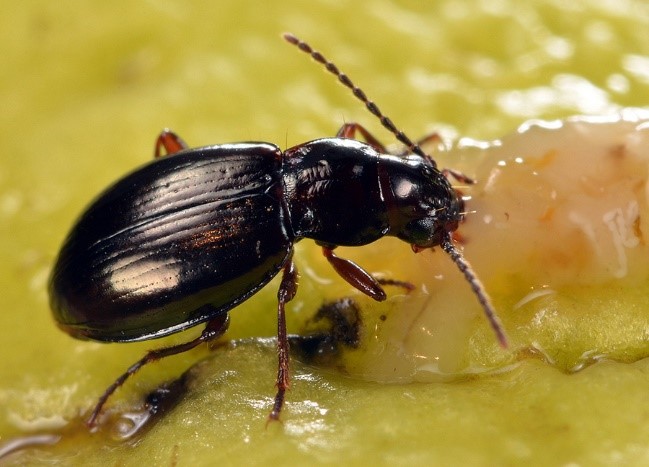
There are currently 24 species of insects introduced and 7 of spiders. To be considered as being introduced in a sustainable way, foreign species must take a number of steps from their home countries to their host countries: the first is maritime transport, the only means of access to the islands, The second is the landing on the island followed quickly by the third stage: the installation. This will be effective when the candidate species has solved two major questions to maintain themselves on the spot: feeding and reproducing. Any species discovered during the ship’s stopovers will not succeed in this third stage of sedentary activity. The 24 insect species and the 7 spiders mentioned above have all crossed these barriers. It is sometimes referred to as the 10th rule: for 1000 candidates, 100 survive transport, 10 arrive to land and 1 to settle. But this rule is not easy to verify. The permanent bases and places of concentration of human activity are privileged places of introduction.
To access the status of invasive species it will be necessary to take new steps: One is dispersal on the new territory beyond its entry point and the second is to have an impact on the functioning of the host ecosystem. Thus five insect species and one spider can be considered invasive. They all have an enlarged distribution in relation to their point of introduction and have an impact on either predation or competition on native species. This is the case with a predatory caraber, Merizodus soledadinus, with high dispersal potential and significantly reducing the populations of the native fly, Myzus ascalonicus and Rhopalosiphum padi aphids, which cause damage Direct on native plants and introduced by the removal of sap from which they feed but also by transmitting phytopathogenic viruses, flies Calliphora Vicina and Fucellia Martima that compete with local species for Food resources or the spider Tenuiphantes held, linyphide building huge canvas networks on the prairies in Acaena.
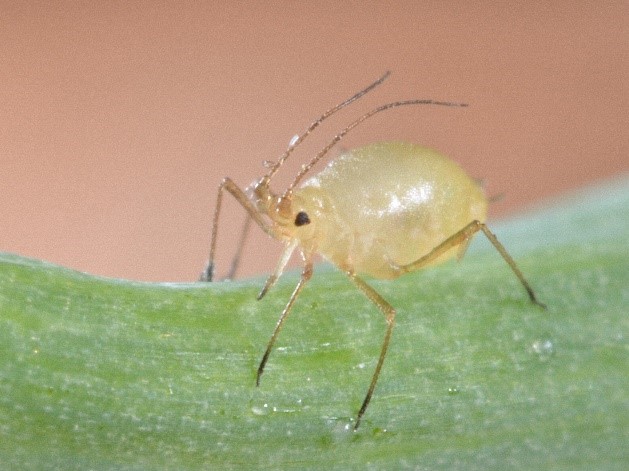
.
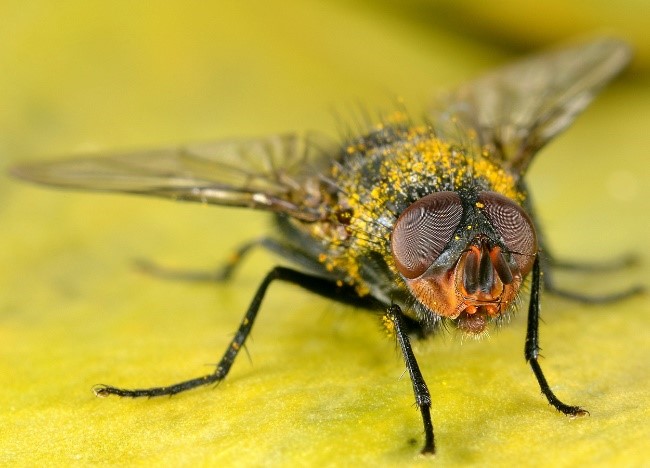
Other species remain confined to their places of introduction or have localized distributions. This is the case for example of the Spiders Steatoda Grossa or Tegeneria domestica which remain confined to the buildings, the aphid Myzus ornatus which is found in Kerguelen only on the basis and around some huts used by scientists.
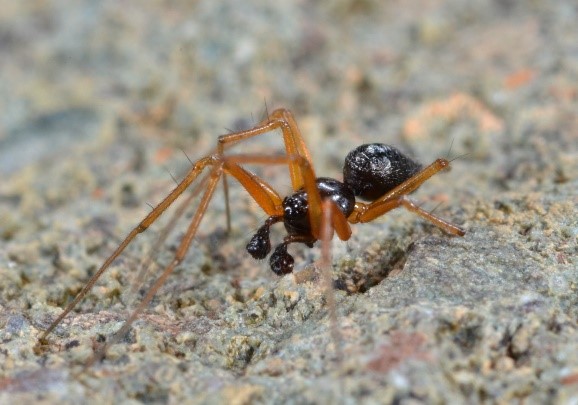
Araneae, Diptera and Hemiptera are the three best-represented orders in species introduced with 7, 11 and 6 species respectively. The introduced Diptera belong to nine different families. Some families (Carnidae, Psychodidae, Scatopsidae, Sciaridae, Trichoceridae) are represented only by introduced species. Of these, Psychoda parthenogenitica is a species present in a large number of islands in the three subantarctic provinces. For Hemiptera, the introduced species all belong to the Aphididae family. Rhopalosiphum padi is also a species that has colonized a large number of subantarctic islands. These species reproduce in a parthenogenetic manner. Thus, parthenogenesis, which raises the constraint of having to be introduced with a sexual partner, seems to be one of the factors that can explain the invasive success of certain species.
Research on terrestrial invertebrates in the Subantarctic islands

Our knowledge of subantarctic biodiversity, as well as the ecology of species, according to the effects of climate change and biological invasions, remains piecemeal. The assessment of the sensitivity and vulnerability of indigenous organizations to climate change and biological invasions must be conducted to better predict the possible development of subantarctic biodiversity. Exotic insects and plants can also represent key elements that modulate the nature of communities and their functional diversity. Changes in plant communities may affect multi-trophic interaction networks, with significant effects on terrestrial animals in terms of abundance, taxonomic and functional diversity.
The Subanteco Research project (funded by the French Polar Institute, Institut Paul Emile Victor-IPEV) seeks to study the spatial and temporal variations of subantarctic biodiversity, biological invasion processes, the effects of Environmental variations on species ecology and physiology, as well as the perception of biodiversity in a non-market context.

This work has benefited from many historical observations which, since the entomological expeditions of René Jain in 1939, have allowed to document quite precisely the history of certain biological invasions such as that of the Carabe Merizodus Soledadinus. This insect was involuntarily introduced to Kerguelen at the beginning of the 20th century on the importation of sheep from the Falklands. Remaining confined to its place of introduction for several decades, it began to disperse in favour of the global warming that was operating in the years 1970. The rate of dispersal of this walker insect was estimated at 3 km/yr.
The monitoring of introduced species and the detection of new species are now the subject of scientific protocols. The support of the IPEV allows young civilian scientific volunteers to be sent annually to apply the protocols developed in the partner laboratories of the SUBANTECO programme for a year in the field. Researchers from these same labs regularly perform summer campaigns.
Links to sites:
- French Polar Institute
- https://insectes.institut-polaire.fr/: Presentation of the invertebrate fauna of the French subantarctic islands
- Https://www6.rennes.inra.fr/polarphid: Research on aphids in polar circles
- Https://www6.inra.fr/encyclopedie-pucerons: Site on aphids and their natural enemies
Source:
- Greve et al. (2017): Terrestrial invasions on sub-Antarctic Marion and Prince Edwards Islands, Bothalia-African Biodiversity & Conservation (link)
- Charlie and Convey P. (2016): Antarctic Entomology-Annual Review of Entomology, Vol61:119-137 (link)
- Hulle M. (2012): Myzus Ascalonicus, an aphis recently introduced to sub-Antarctic Islands, preirons native to exotic host-plant-Environmental Entomology, vol 41 (6): 1398-1404 (link)
- Greenslade P.; Vernon P. and Spith D. (2012): Ecology of Heard Island Diptera-Polar Biology, vol 35 (6): 841-850 (link)
- Li M. et al. (2011): The significance of the Sub-Antarctic Kerguelen Islands for the assessment of the vulnerability of native communities to climate change, alien insect invasions and plant viruses-biological invasions, Vol 13 (5): 1195-2108 (link)
- Convey P. & Li M. (2009): Environmental Change and human impacts on terrestrial ecosystems of the Sub-Antarctic Islands between their discovery and mid-twentieth century-papers and proceedings of the Royal Society of Tasmania, Vol 143 (1): 33-44 (link)



